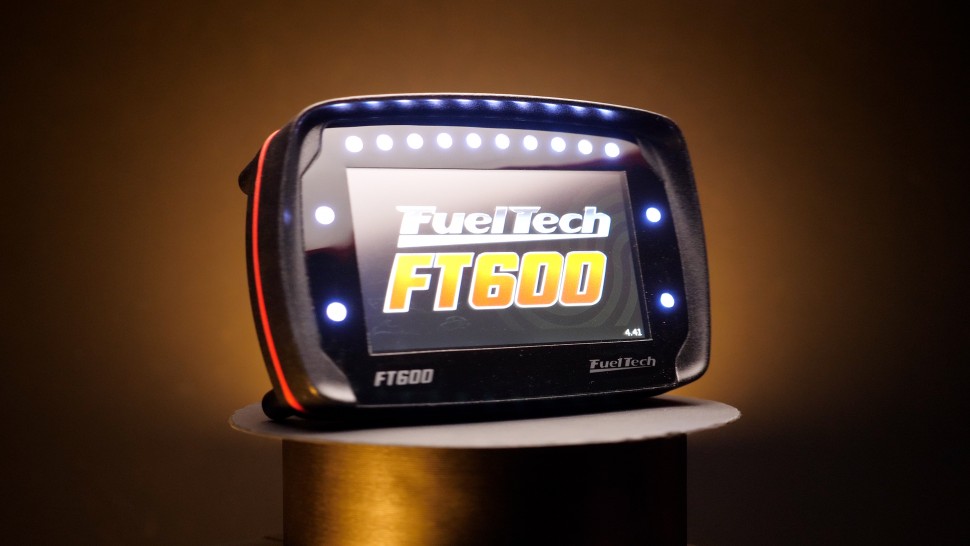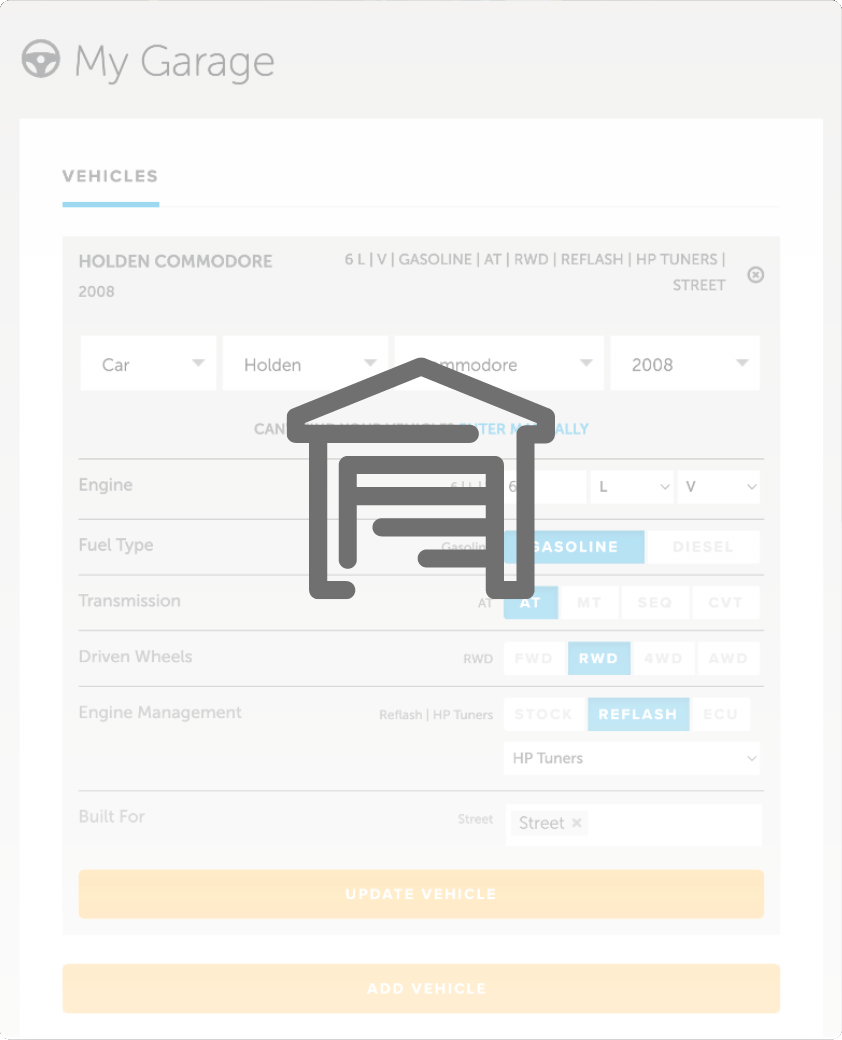| 00:00 |
In the previous module, we discussed the theory behind TCM and ECM integration, and now it's time to look at the subject from a practical side to get a better understanding of how it's implemented.
|
| 00:10 |
When the vehicle is stock and the tune is stock, we can compare the dyno torque output to the torque values in the ECU and get a feel for their relationship.
|
| 00:20 |
As you compare, keep in mind unless you're using an engine dyno, you're likely seeing dyno-reported torque at the hubs or tires.
|
| 00:29 |
In addition to some dynos reading higher or lower, you're also seeing a difference in reported engine torque due to drivetrain loss.
|
| 00:37 |
The important thing is the relationship between what you see on the dyno and what the factory ECU reports.
|
| 00:45 |
Perhaps the dyno indicates torque 10-15% lower than the ECU is calculating.
|
| 00:51 |
As long as it's consistent in that, now you can start tuning and use dyno data to update ECU torque calculation values if necessary to keep them accurate.
|
| 01:02 |
If you are creating torque beyond what the stock torque tables account for, you can adjust the tables to include new data based on your findings on the dyno.
|
| 01:11 |
For example, if the vehicle made 300 ft -lbs of ECU-reported torque, 270 ft-lbs on the dyno, and you've doubled the torque on the dyno.
|
| 01:22 |
You can update the torque estimation tables so they calculate double stock torque under the RPM and load conditions your Nuke tune creates.
|
| 01:31 |
This is an iterative process and you want to start with modest increases rather than doubling the torque, so that your torque model is never far from the mark during the tuning process.
|
| 01:42 |
If you don't have access to a dyno, you can extrapolate OEM data in a reflash -based environment if you increase max engine speed or torque beyond stock table maximums.
|
| 01:54 |
This isn't the ideal solution, but it can get you in the ballpark.
|
| 01:58 |
For example, if the torque estimation table only goes up to a maximum access value of 4 grams per revolution, estimated torque values in that row are 390 to 410 ft-lbs of torque, and we want to run up to 4.2 grams per rev, 425 ft-lbs of torque, the extra airflow would put us off the end of our table, and our ECU would never report more than the values in that 4 grams per rev row.
|
| 02:28 |
Even if we generated 8 grams per rev and 800 ft-lbs of torque, if our table values end at 4 grams per rev and 400-ish ft-lbs of torque, that's the most the system will ever calculate, causing severe error in reporting to the TCM.
|
| 02:46 |
To remedy this, we can take the highest access value of 4 grams per rev, multiply it by 1.1 to add 10%, and we'll get 4.4 grams per rev.
|
| 02:57 |
We can then multiply the estimated torque values in that row by the same 1.1, so instead of the 390 to 410 ft-lbs, we'll have 429 to 451 ft-lbs.
|
| 03:11 |
If we multiply both the load axis and the table Z data in that row by the same value, we likely won't end up too far from reality.
|
| 03:22 |
For clarity, if you're not familiar with the term Z data, 3D tables have an X-axis across and a Y-axis vertically.
|
| 03:30 |
The Z data is what's between them.
|
| 03:33 |
After making those changes, when the engine receives 4.2 grams per rev and makes 425 ft-lbs of torque, the new tune will calculate it correctly, and with some room to spare if we end up flowing a little more air in a day where ambient conditions are more favorable.
|
| 03:50 |
The amount we need to rescale these tables depends on the size of the increase in airflow and torque beyond factory table values.
|
| 03:59 |
While the simple one-row method I mentioned works fine for a modest increase, if we build a serious engine package capable of 30, 100, or 200% more torque than the values in the stock table account for, we'll want to do more than just edit the last row.
|
| 04:14 |
While torque should generally increase in a relatively linear fashion with air mass, it's not quite that simple, and updating multiple rows of the table will allow us to more accurately represent the full range of torque that an engine produces if the gain is large.
|
| 04:29 |
When deciding which rows to edit, I like to view the table graphically so I can see if adjacent rows flow in a linear fashion.
|
| 04:37 |
Because control systems generally interpolate between rows, I know I can remove a row of data in a linear region without losing precision of control.
|
| 04:48 |
I can then shift rows up and buy myself another row to use in an area that requires non-linear adjustment.
|
| 04:55 |
Next, if you're dealing with swap parts, common swaps are sometimes supported with easy pull-down menu updates.
|
| 05:02 |
Rather than having to know all the back -end details, the tough part is done for you.
|
| 05:07 |
One example would be swapping a 4L80 in place of a 4L60.
|
| 05:11 |
Because this is so common, software providers tend to offer a simple solution.
|
| 05:16 |
When you're working with a swap that doesn't allow for cross-communication and control on the existing hardware by simple settings changes, things can get vastly more complex.
|
| 05:27 |
Expect that to involve additional software effort and potentially additional control components.
|
| 05:34 |
While we can't cover every possible scenario of mix-and-match parts, generally speaking, when dealing with an auto-manual valve-bodied transmission that's modern enough to have a TCM -expecting torque data and ECU integration, retaining that cross -communication and maintaining the accuracy of torque estimation and requests is required.
|
| 05:55 |
If you're considering using a standalone engine computer, it's a good idea to see if it has built-in capability of either controlling your transmission or communication with a separate TCM that can do the job to avoid unexpected complications.
|
| 06:10 |
We may also be able to fit an aftermarket TCM, which is prepped to control our particular transmission and is more flexible in communicating with aftermarket engine controllers.
|
| 06:21 |
In some cases, for off-road use, it may be desirable to switch the transmission to a full manual valve body, remove the TCM altogether, and either forgo ECU torque adjustment during shifts or trigger them based on shifter position changes or other input criteria such as clutch slip calculated from transmission component speeds.
|
| 06:41 |
Like most things, we can stay as mild or get as wild as we'd like, but when you're planning your project, be sure to determine whether your ECU and TCM control systems are compatible.
|
| 06:53 |
Next, we'll get into the often dreaded topic of torque management and hopefully put a positive spin on it by illustrating the opportunity to protect your vehicle rather than hinder your vehicle.
|
| 07:03 |
First, let's wrap up a few key points found in this module before we move on.
|
| 07:08 |
If you've increased max engine speed or torque beyond the values included in any torque estimation tables, make sure you update them accordingly.
|
| 07:18 |
If the engine or transmission is a swap, we'll need to make sure they can not only physically be mated, but the control systems must be able to communicate and work together as well.
|
| 07:30 |
The same goes for using an aftermarket ECU, TCM, or both.
|
| 07:35 |
We need to make sure they can work together before buying.
|





